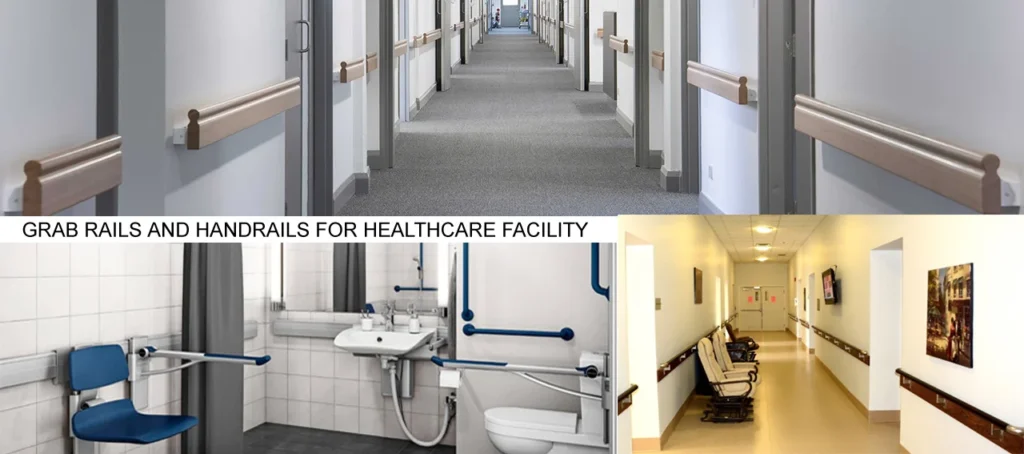Grab rails and handrails serve as critical safety features in healthcare settings, providing stability and support in areas where slips, trips, or falls are most likely to occur.
For patients, these rails offer reassurance and assistance when navigating hallways, using restrooms, or moving in and out of beds and chairs. The added support reduces the risk of falls — a leading cause of injury in hospitals and long-term care facilities.

For healthcare staff, handrails can ease the physical strain of assisting patients by providing reliable anchor points for guiding movement. In emergency situations, these rails also serve as vital aids for quick evacuation or patient transfers, ensuring a smoother and safer process for everyone involved.
Ultimately, grab rails and handrails create a safer, more accessible environment, enhancing patient independence and easing the burden on caregivers — a small addition with a profound impact.
If you want to know about the Types of slabs or Permeable concrete or Islamic architecture, please click the link.
1) General
i) Continuity
In corridors accessed by patients, a grab rail to one side is mandatory. Depending on the plan the following will apply:
- The hand rail should be on the side of the wall leading to the majority of rooms or areas related to patients
- If the continuity of the grab rail is interrupted due to a large number of doors placed in close proximity, a grab rail should be provided to the opposite wall, at least for the length of corridor affected.
ii) Prevention of Self Harm
In certain areas such as Mental Health Units, grab rails may present the possibility of self harm by providing points of ligature.
Depending on the Operational Policy, corridor handrails in Mental Health Units shall be designed in such a way that the space between the base of the handrail profile and the wall is blocked.
This arrangement does not totally eliminate the ligature point, but it makes it impossible to tie an object around the rail.
iii) Outside Corners
Handrails meeting outside wall corners should be either continuous around the corner or set back from the corners by approximately 100 mm.
This is to minimise the chance of the rail grabbing onto clothing, especially large pockets. Any handrails continuing around 90 degree corners shall be rounded to avoid a dangerous sharp edge.